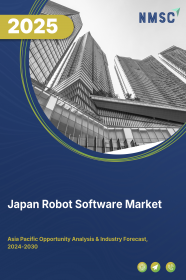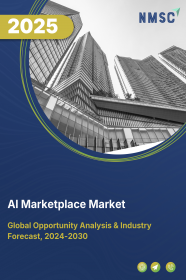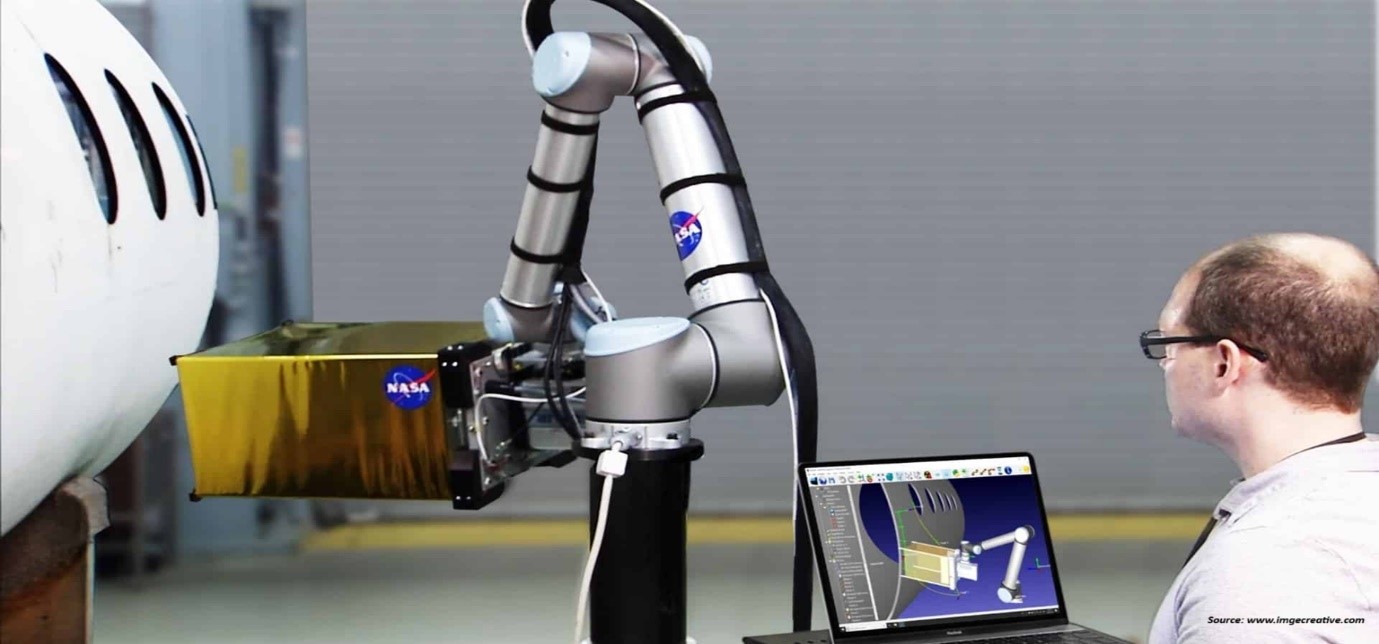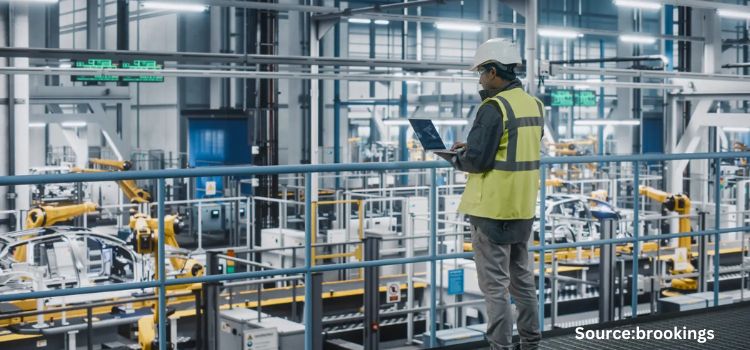
Japan Robot Software Market by Software Type (Recognition Software, Simulation Software, Predictive Maintenance Software, Communication Management Software, and Data Management and Analysis Software), by Robot Type (Service Robots and Industrial Robots), by Deployment Mode (On-premise and On-demand), by Organization Size (Large Enterprises and Small and Medium-sized Enterprises (SMEs) – Opportunity Analysis and Industry Forecast, 2024–2030
Industry: ICT & Media | Publish Date: 14-Feb-2025 | No of Pages: 126 | No. of Tables: 92 | No. of Figures: 57 | Format: PDF | Report Code : IC2388
US Tariff Impact on Japan Robot Software Market
Trump Tariffs Are Reshaping Global Business
Japan Robot Software Market Overview
The Japan Robot Software Market size was valued at USD 329.4 million in 2023, and is expected to reach USD 1789.6 million by 2030, with a CAGR of 26.3% from 2024 to 2030. Robot software encompasses a suite of programs and algorithms designed to oversee and control the operations of robots or robotic systems across various industries such as logistics, manufacturing, entertainment, healthcare, and more.
Its functionality involves several key components. Firstly, it manages and coordinates the movements and behaviors of robots, ensuring precise and efficient task execution by issuing detailed commands to robotic components such as motors and actuators. Additionally, robot software plays a critical role in interpreting data from diverse sensors embedded within robots, including cameras, Light Detection and Ranging (LIDAR) sensors, and tactile sensors, providing essential environmental feedback enabling robots to perceive and understand their surroundings.
An essential aspect of robot software is its ability to make intelligent decisions using artificial intelligence (AI) and machine learning (ML) algorithms. By analyzing data from sensors, adhering to predefined rules, or learning from past experiences, robots can adapt to changing conditions, enabling them to operate autonomously and adjust their actions in real-time. Furthermore, robot software facilitates communication and networking between robots, allowing collaboration for complex tasks or data exchange with a central control system. This interconnectedness enables synchronized operations in industrial environments, leading to enhanced efficiency and productivity.
The Convergence of Industry 4.0 and IoT Drive the Japan Robot Software Market Growth
The intersection of Industry 4.0 and the Internet of Things (IoT) stands out as a significant catalyst for the expansion of the Japan robot software market. Industry 4.0, marked by the infusion of digital technologies into manufacturing operations, along with advancements in IoT, has reshaped the landscape of industrial automation.
IoT-enabled devices and sensors facilitate the real-time gathering and exchange of data, offering valuable insights into manufacturing processes and enhancing connectivity across the production chain. This interconnected framework presents opportunities for robot software solutions to harness data analytics, predictive maintenance techniques, and adaptive control algorithms, thereby optimizing the performance and efficiency of robots.
Moreover, the principles of Industry 4.0 underscore agility, flexibility, and scalability, spurring the demand for robot software solutions that facilitate seamless integration, interoperability, and collaboration within smart manufacturing environments. As a result, the synergies between Industry 4.0 and IoT drive the adoption of robot software, fostering innovation and efficiency in industrial automation workflows.
Rising Labor Costs and Workforce Challenges Drive the Growth of the Japan Robot Software Market Trends
Rising labor costs and the difficulties in finding suitable workforce members are significant factors propelling the expansion of the Japan robot software market demand. With labor expenses on the rise, especially in sectors heavily dependent on labor-intensive activities, companies are actively seeking ways to cut costs while maintaining productivity levels.
This trend fuels a widespread embrace of automation technologies, including robots, aimed at streamlining operations and diminishing reliance on human labor. At the heart of this shift lies the crucial role played by robot software, which facilitates efficient programming, management, and optimization of robotic systems.
Additionally, challenges related to workforce, such as skill shortages and demographic changes, serve as further motivation for businesses to invest in robot software solutions, ensuring the smooth continuation of operations and competitiveness. Consequently, the robot software market witnesses continual growth as organizations increasingly embrace automation to tackle labor-related obstacles and bolster operational efficiency.
Cybersecurity and Data Protection Concerns Associated with Robot Software Restrain the Growth of the Japan Robot Software Market
Cybersecurity and data protection concerns associated with robot software represent significant barriers to the Japan robot software market's growth. As robots become increasingly interconnected within digital ecosystems, they are vulnerable to various cyber threats, including unauthorized access, data breaches, and malware attacks.
Insufficient cybersecurity measures within robot software can compromise sensitive data, intellectual property, and operational integrity, potentially resulting in financial losses and reputational damage for organizations. Moreover, with the proliferation of IoT-enabled robots and the accumulation of vast amounts of data, there is an elevated risk of data privacy violations and regulatory non-compliance.
Consequently, organizations are cautious about adopting robot software solutions lacking robust cybersecurity features and data protection mechanisms, which restrains the Japan robot software market growth. Addressing these concerns through enhanced cybersecurity measures, encryption protocols, and compliance frameworks is essential to build trust and drive wider adoption of robot software across diverse industries.
The Expansion of Robotics-as-a-Service Creates New Opportunities in the Japan Robot Software Market
The proliferation of Robotics-as-a-Service (RaaS) introduces fresh prospects in the market by offering a more accessible and cost-effective avenue for organizations to deploy robotics solutions in the country. RaaS models enable businesses to access robotic hardware, software, and associated services through subscription plans, eliminating the need for significant upfront investments in capital-intensive assets.
This approach diminishes entry barriers, particularly for small and medium-sized enterprises (SMEs) or entities with limited budgets, enabling them to leverage robotics technology without the financial constraints of ownership.
Furthermore, RaaS models often encompass maintenance, support, and software updates within the subscription, providing added value and simplifying the deployment process. By democratizing access to robotics technology and promoting a pay-as-you-go model, the expansion of RaaS unlocks new market opportunities, driving adoption across diverse industries and catalyzing innovation in robot software solutions.
Competitive Landscape
Several key players operating in the Japan robot software industry include IBM, NVIDIA, ABB Ltd., FANUC, Teradyne, Inc., H2O.ai, Brain Corp, CloudMinds, Clearpath Robotics, and Neurala, Inc. These market players are adopting strategies to maintain their dominance in the market.
Japan Robot Software Market Key Segments
By Software Type
-
Recognition Software
-
Simulation Software
-
Predictive Maintenance Software
-
Communication Management Software
-
Data Management and Analysis Software
By Robot Type
-
Service Robots
-
Ground
-
Aerial
-
Underwater
-
-
Industrial Robots
-
Traditional Industrial Robots
-
Articulated Robots
-
SCARA Robots
-
Parallel Robots
-
Cartesian Robots
-
Other Robots
-
-
Collaborative Industrial Robots
-
By Deployment Mode
-
On-premise
-
On-demand
By Organization Size
-
Large Enterprises
-
Small and Medium-sized Enterprises (SMEs)
By Industry Vertical
-
Banking, Financial Services, and Insurance (BFSI)
-
Automotive
-
Retail and eCommerce
-
Aerospace & Defense
-
Healthcare and Life Sciences
-
Transportation and Logistics
-
Manufacturing
-
Telecommunications and IT
-
Academia and Research
-
Media & Entertainment
-
Others
REPORT SCOPE AND SEGMENTATION:
|
Parameters |
Details |
|
Market Size in 2023 |
USD 329.4 Million |
|
Revenue Forecast in 2030 |
USD 1789.6 Million |
|
Growth Rate |
CAGR of 26.3% from 2024 to 2030 |
|
Analysis Period |
2023–2030 |
|
Base Year Considered |
2023 |
|
Forecast Period |
2024–2030 |
|
Market Size Estimation |
Million (USD) |
|
Growth Factors |
|
|
Companies Profiled |
10 |
|
Market Share |
Available for 10 companies |
|
Customization Scope |
Free customization (equivalent up to 80 working hours of analysts) after purchase. Addition or alteration to country, regional, and segment scope. |
|
Pricing and Purchase Options |
Avail customized purchase options to meet your exact research needs. |
KEY PLAYERS
-
IBM
-
NVIDIA
-
ABB Ltd.
-
FANUC
-
Teradyne, Inc.
-
H2O.ai
-
Brain Corp
-
CloudMinds
-
Clearpath Robotics
-
Neurala, Inc.

















 Speak to Our Analyst
Speak to Our Analyst





















